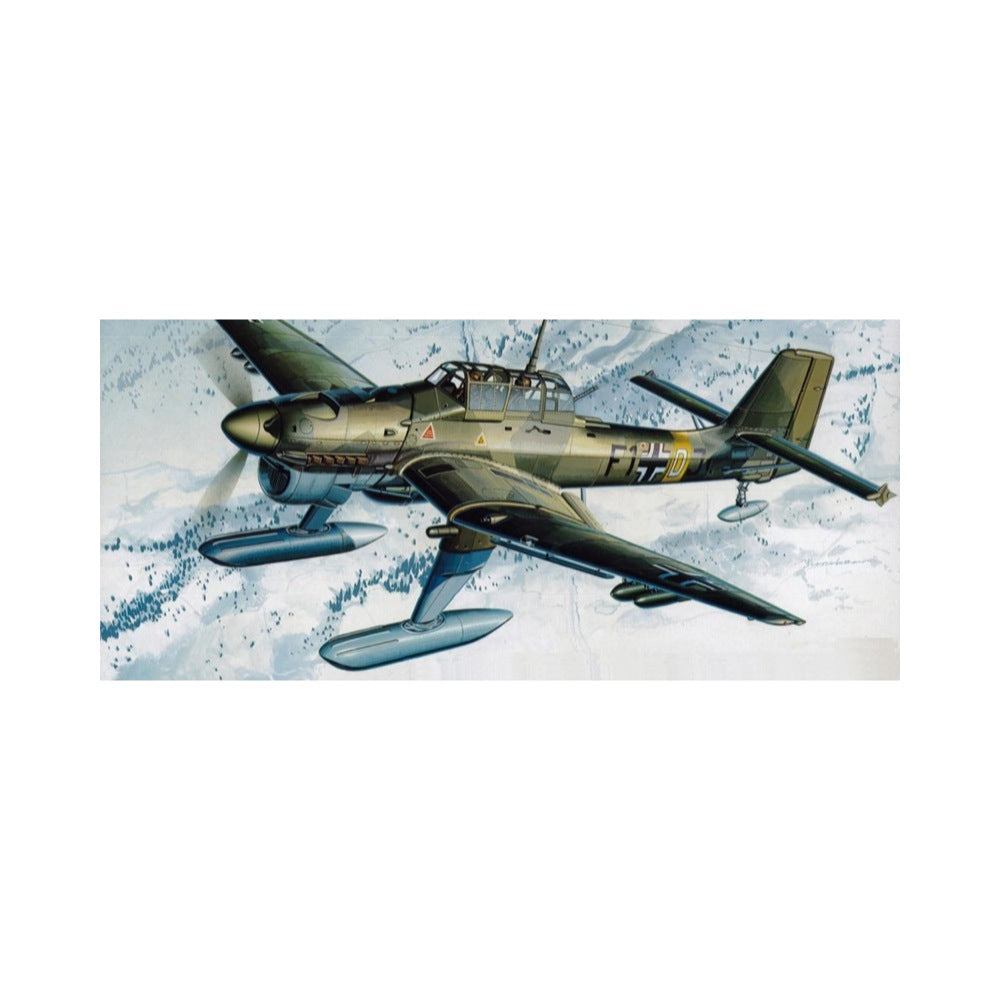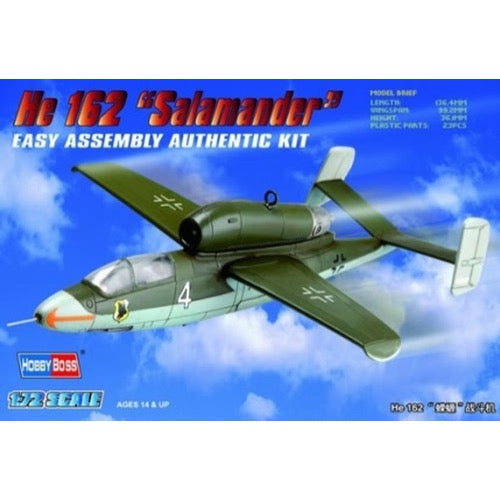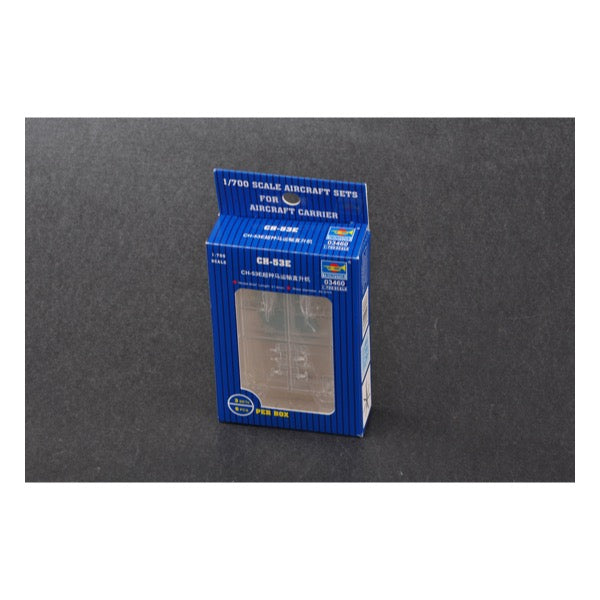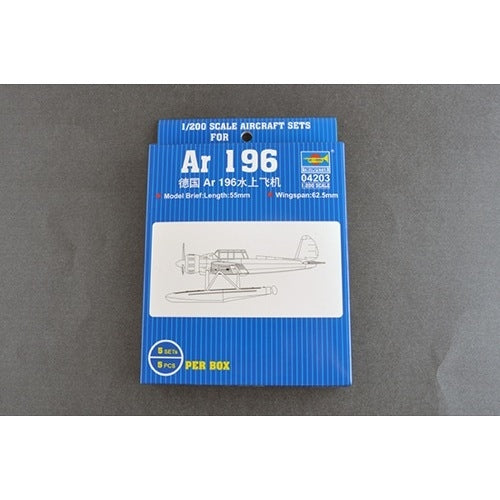
Trumpeter 04203 1/200 Arado 196
7.00
$
<p>The Arado Ar 196 was a shipboard reconnaissance low-wing monoplane aircraft built by the German firm of Arado starting in 1936. The next year it was selected as the winner of a design contest and became the standard aircraft of the Kriegsmarine throughout World War II.</p>
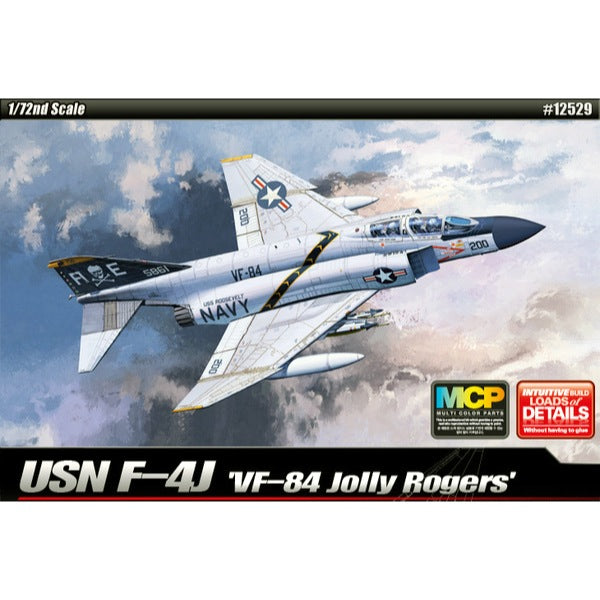
Academy 12529 1/72 USN F-4J "VF-84 Jolly Rogers" Phantom II
27.00
$
<p>The McDonnell-Douglas F-4 Phantom is a long-range, twin-engine, two-seater multi-role fighter designed for operations in difficult weather conditions. The flight of the prototype took place on May 27, 1958, and serial production began in 1961. Originally, the F-4 was intended only as a stormtrooper, but from 1955 on, the design work went towards meeting the US Navy's need for a new on-board fighter. The F-4 Phantom turned out to be a very successful machine, produced in several versions, exported to many countries and produced under license. The first versions are models from A to D intended for fighter-bombers. The next version is the F-4E, produced since 1967 as a long-range fighter. Reconnaissance versions were also created: RF-4B, RF-4C and RF-4E. The latest versions are the F-4F and F-4G Wild Weassel - these are electronic warfare planes and designed to fight the enemy radars. The F-4 took part in the Vietnam War, the conflicts in the Middle East (1967, 1973) and the Iran-Iraq War (1980-1988). In total, 5,057 F-4 Phantom aircraft were built. Technical data (version F-4E): Maximum speed: 2370 km / h, speed of climb: 210 m / s, maximum ceiling 18300 m, maximum range: 2600 km, armament: fixed - 1 20mm M61A-1 cannon, Suspended - up to 7255 kg of bombs and rockets.</p>
<p>Strike Fighter Squadron 103 (abbreviation VFA-103) is an American in-flight air unit created in May 1952. Currently, the most characteristic hallmark of the VFA-103 aircraft is the pirate flag, in English called Jolly Rogers, on the horizontal stabilizers. It was also the source of the squadron's unofficial name. The first aircraft on which the VFA-103 pilots flew were the FG-1D Corsair. In 1957, the unit was rearmed with the F-8 Crusader, as one of the first in the US Navy. At the turn of 1964/1965, the VFA-103 began to be armed with the new F-4 Phantom machines. In 1983, however, it was rearmed with the new Grumman F-14A Tomcat fighters, armed with AIM-54 Phoenix missiles. Currently, the basic aircraft of the unit is the F / A-18F Super Hornet. Strike Fighter Squadron 103 pilots took an active part in the Vietnam War (1964 / 195-1975) and in both Persian Gulf Wars (1990-1991 and 2003).</p>
<p>This is an injection-plastic jet aircraft model kit.</p>
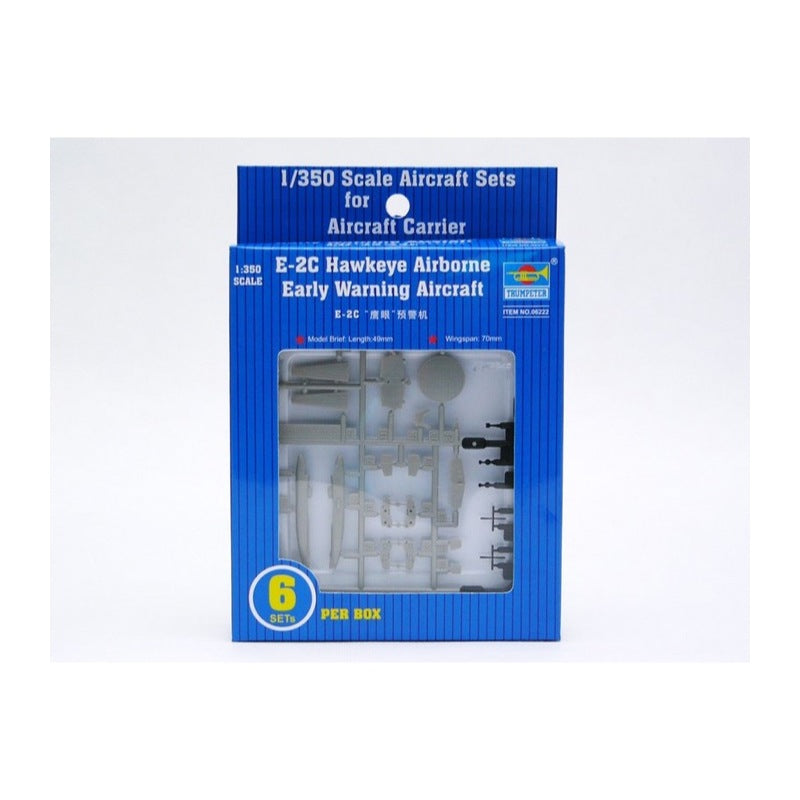
Trumpeter 06222 1/350 Mini Aircraft-E-2C Hawkeye Warning 6 pcs./box
6.00
$
<p>High quality, precision <a>plastic model kit</a>. <a>Paint</a> and <a>glue</a> not included. Requires assembly and painting. For intermediate to advanced skill modellers.</p>
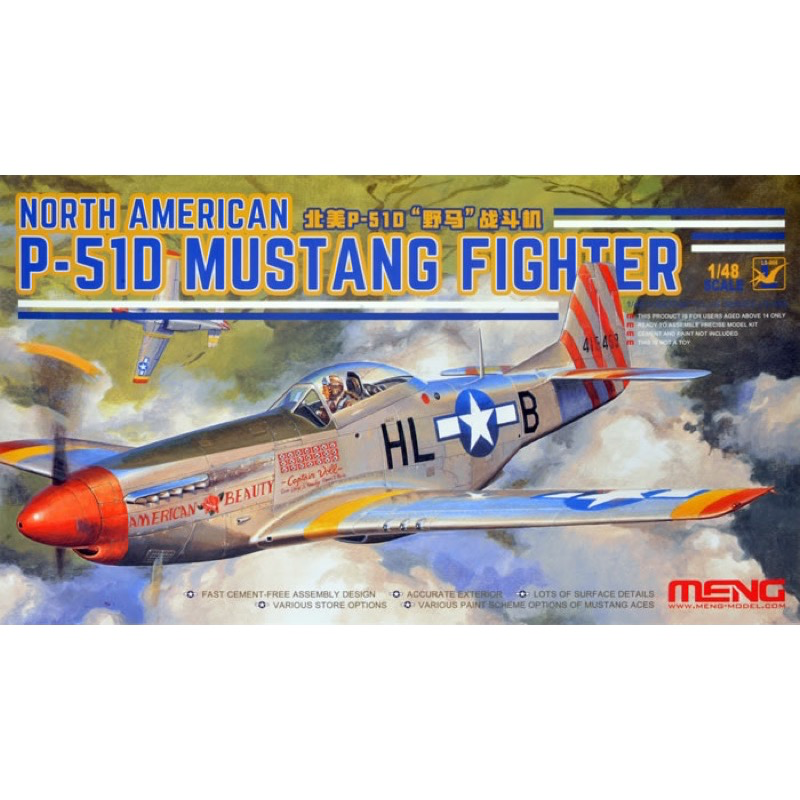
Meng LS-006 1/48 North American P-51D Mustang Fighter
23.00
$
<p>There was once a Mustang racing across the blue sky, killing enemies. It’s the North American P-51 Mustang, which rarely had well-matched rivals, and it’s the best fighter in term of general performance during World War II.<br>
The excellent P-51 Mustang had the advantages like fast speed and outstanding maneuverability. It could easily defeat any fighter of the Axis powers at that time. The P-51D was the most important Mustang variant. It had improved firepower and could provide the pilot with better visibility. It’s the most produced Mustang.<br>
Now, MENG’s team brings a scale model kit of this famous Mustang with many highlights. It’s the 1/48 scale LS-006 North American P-51D Mustang Fighter plastic model kit. The features like fast cement-free assembly design, various store options and various paint schemes of Mustang aces will help you replicate this once world-renowned Mustang.</p>
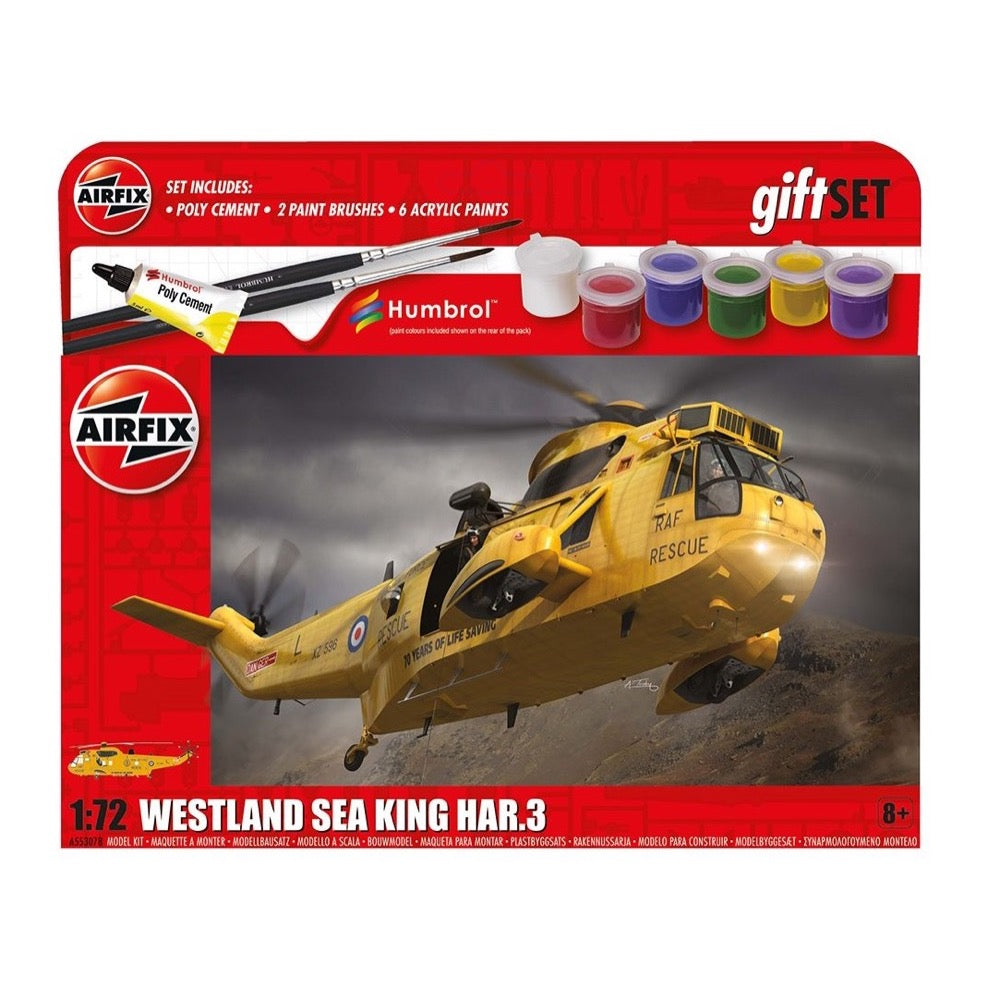
Airfix A55307 1/72 Westland Sea King HAR.3 Large Starter Set
10.00
$
<p>The Sea King HAR. 3 is a modified Search and Rescue (SAR) variant of the Westland Sea King, entering service in 1978 as a replacement for the Westland Whirlwind HAR.10. It first saw operation with the RAF in 1982 and was later manufactured by Westland for the Royal Norwegian Air Force, the Belgian Air Force and the German Navy. In 1992 six upgraded HAR.3As were ordered for the RAF, fitted with a digital navigation system and improved avionics. The HAR. 3 would endure as a proficient SAR Sea King, providing around-the-clock SAR cover across the UK and Falkland Islands. The Mk3 Sea King left RAF service in 2016, although the Mk7 is expected to remain in Royal Navy service until 2018. The standard SAR four-man crew consists of two pilots, a radar and winch operator and a winchman/paramedic.</p><h3>Features</h3><ul>
<li>1:72 scale plastic scale model kit</li>
<li>Construction and painting required - glue, brushes and paints included.</li>
<li>Skill level: 3 (where 1 is for the beginner and 4 is for the more experienced modeller)</li>
<li>L307 x W263 (mm)</li>
<li>Parts: 245</li>
</ul>
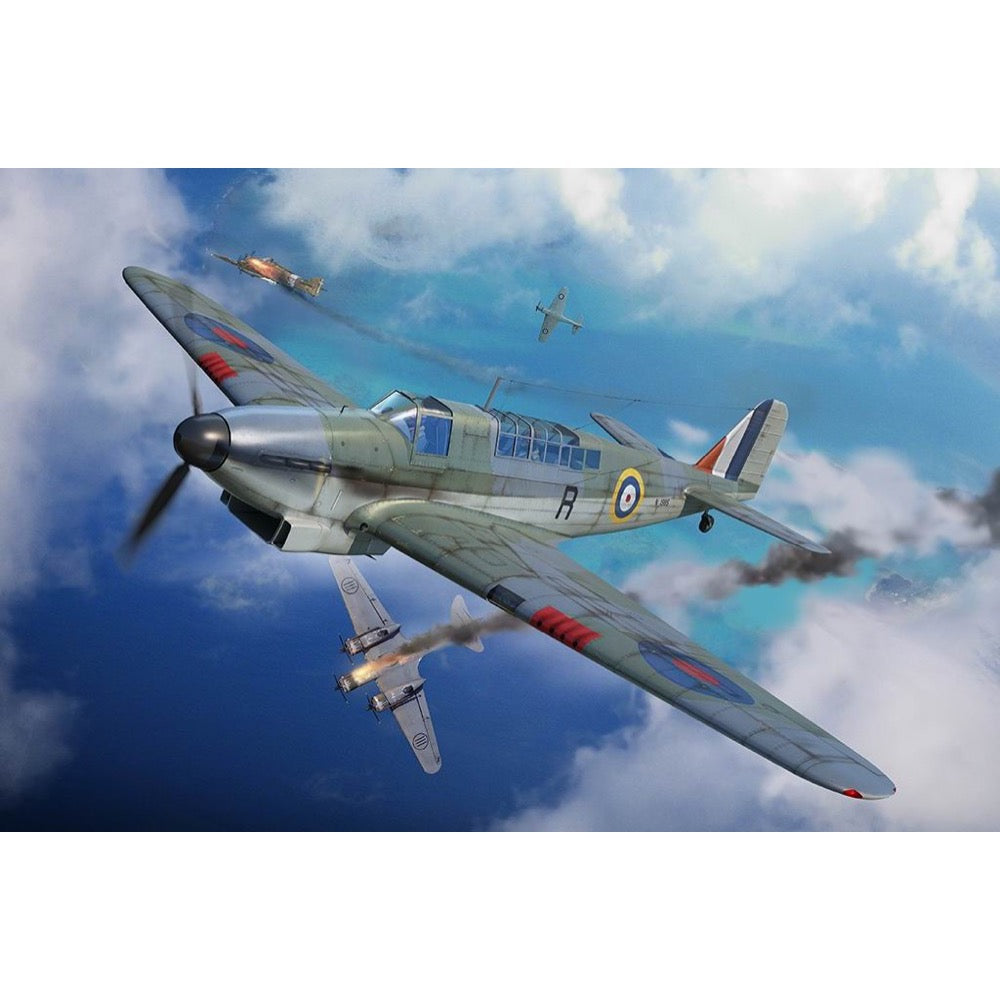
Trumpeter 05823 1/48 Fairey Fulmar Mk.II
34.00
$
<p>The Fairey Fulmar was a British carrier-borne fighter aircraft that served with the Fleet Air Arm (FAA) during the Second World War. A total of 600 were built by Fairey Aviation at its Stockport factory between January 1940 and December 1942. The Fulmar's design was based on that of the earlier Fairey P.4/34 that was in turn developed in 1936 as a replacement for the Fairey Battle light bomber. Although its performance (like that of its Battle antecedent) was lacking, the Fulmar was a reliable, sturdy aircraft with long range and an effective eight machine gun armament.</p>
<h3>Features</h3>
<ul>
<li>The kit consists of over 140 parts</li>
<li>Fuselage & wing with finely engraved panel lines</li>
</ul>
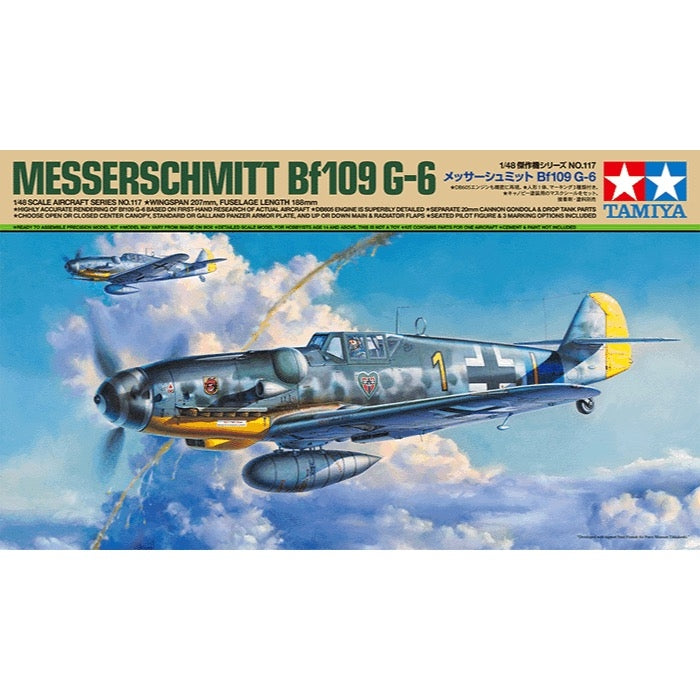
Tamiya 61117 1/48 Messerschmitt BF 109G-6
29.00
$
<h3>Gustav with Gusto!</h3>
<p>With over 30,000 produced, the Messerschmitt Bf109 is the most prolifically manufactured fighter in history; of its variants, the G-6 was the most numerous at 13,000 aircraft.</p>
<p>In response to improving Allied foes in the air, Bf109 G aircraft had the more powerful DB605 engine, and from the G-6 were equipped with dual 13mm MG131 machine guns that required the distinctive bulges on either side of the cockpit cowling known as "Beule." Some were even given a 20mm cannon gondola under each wing for further improved firepower.</p>
<p>The Bf109 G-6 was deployed on both the Western and Eastern fronts, in particular dominating Soviet adversaries as it continued in service through to the end of WWII.</p>
<h3>Features</h3>
<ul>
<li>
<p>Length: 188mm, wingspan: 207mm.</p>
</li>
<li>
<p>In depth study of actual aircraft led to this highly detailed kit.</p>
</li>
<li>
<p>Features an exquisite recreation of the DB605 engine.</p>
</li>
<li>
<p>Separate parts are included to recreate wing underside 20mm cannon gondolas.</p>
</li>
<li>
<p>Poly cap allows detachment and attachment of drop tank.</p>
</li>
<li>
<p>Choose from 2 different types of air intake part - standard and with dust filter.</p>
</li>
<li>
<p>Can be assembled with standard or Galland panzer canopy rear armor plate.</p>
</li>
<li>
<p>Construct with canopy open or closed.</p>
</li>
<li>
<p>Main and radiator flaps can be depicted up or down.</p>
</li>
<li>
<p>Comes with a seated pilot figure for further realism.</p>
</li>
<li>
<p>3 marking options are included, plus canopy masking stickers and a color painting guide.</p>
</li>
</ul>
<h3>The Gustav</h3>
<ul>
<li>
<p>This definitive kit has its roots in the study of real aircraft, allowing superb accuracy in its recreation.</p>
</li>
<li>
<p>Choices abound, with options available to the modeler for engine cowlings, canopy and flaps.</p>
</li>
<li>
<p>Magnet-attached parts for both open and closed engine cowlings are included and are interchangeable after assembly.</p>
</li>
<li>
<p>Marvel at the beautiful depiction of the powerful DB605 engine, enabled by the interchangeable cowlings.</p>
</li>
<li>
<p>Superlative detail is on display across the kit; here in the form of the dual 13mm machine guns.</p>
</li>
<li>
<p>Modelers can choose whether to assemble with standard air intakes or those with dust filters.</p>
</li>
<li>
<p>Main and radiator flaps can be assembled up or down, and leading edge slats deployed or flush.</p>
</li>
<li>
<p>Poly cap attachment method allows later removal and re-affixing of the drop tank at will.</p>
</li>
<li>
<p>Multi-part recreations of the under-wing 20mm cannon gondolas give an authentic finish.</p>
</li>
<li>
<p>Highly realistic pilot figure in seated position adds a further level of detail to the kit!</p>
</li>
<li>
<p>The boxy canopy center section can be assembled open or closed. Sight uses separate clear part.</p>
</li>
<li>
<p>3 marking options are included on the decal sheets. Masking stickers aid with canopy paint job.</p>
</li>
</ul>
<p> </p>
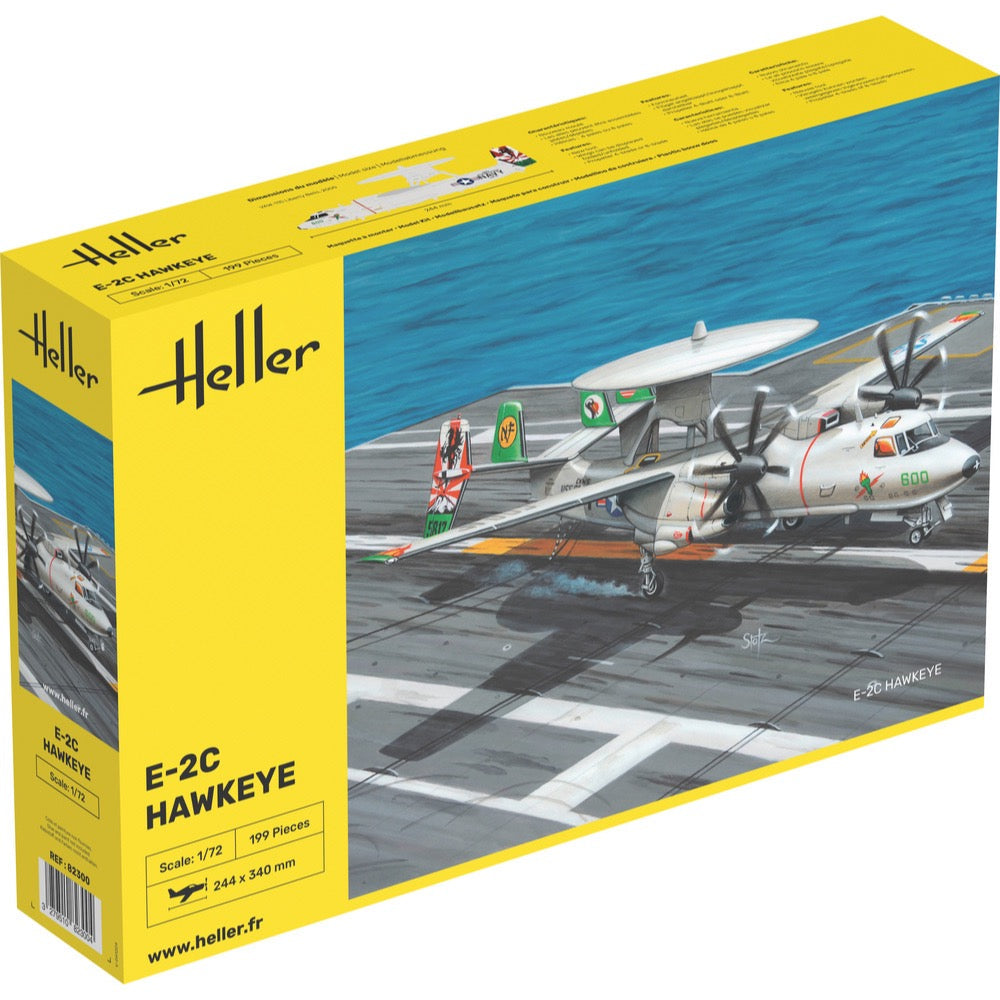
Heller HLL82300 1/72 Grumman E-2C Hawkeye
46.00
$
<p>Designed by Grumman as from 1957 to carry out surveillance missions from aircraft carriers in an entirely autonomous way, the E-2 Hawkeye has up to now never ceased to develop. Certainly today's most complex aircraft ever to be loaded, its large dimensions however don't prevent it from going down into the hangars of the aircraft carrier, since the wings fold back laterally on each side of the fuselage. The operational core is in fact the radar, combined with a very high performance computer. The French Navy ordered three units of the most recent model in April 1995. They took delivery of the first one on the 18th December 1998 at the Lann-Bihoué airbase. These aircraft are part of the 4F Flotilla and are aboard the Charles de Gaulle aircraft carrier.</p>

Special Hobby 1/48 Phonix D.I K.u.K. Kriegsmarine
24.00
$
<p>The Phonix DI is an Austro-Hungarian WW1 mixed biplane fighter based on the Hansa-Brandenburg DI aircraft. The aircraft was first flown in 1917 and entered mass production the same year. These fighters were used by both the air force and the Austro-Hungarian navy. They turned out to be fast machines, but unstable in flight. Their speed reached 180 km / h, which was partly due to the Hiero VI engine with a capacity of 200 HP. These planes were used until 1918, and after the end of the war, they were exported to Sweden, where they were still in service in the 1920s.</p>


